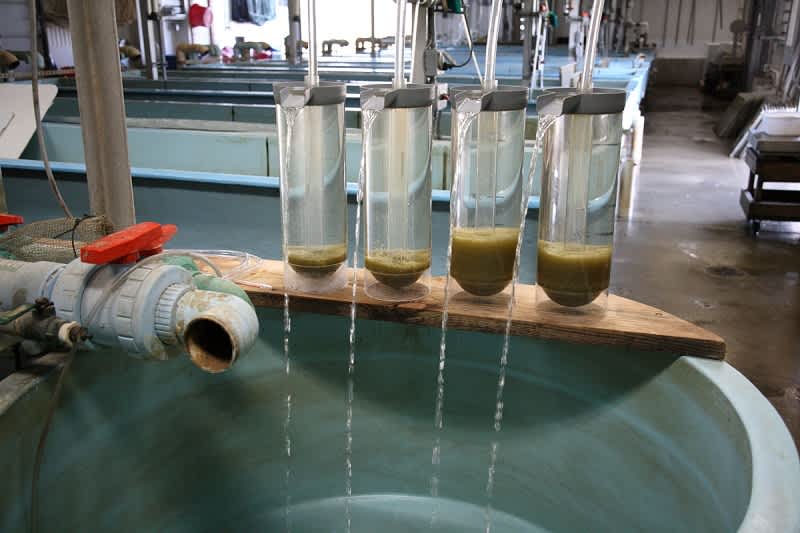Collecting of Broodstock Key to Excellent Muskellunge, Walleye and Other Kentucky Fisheries

Crews from the fisheries division of the Kentucky Department of Fish and Wildlife Resources will be spreading out across the state in a few weeks to collect broodstock for the Minor Clark Hatchery in Morehead and the Pfeiffer Fish Hatchery near Frankfort.
“We hoped to get out there by the first of February, but we are held by up the current cold temperatures and the hatchery ponds being frozen over,” said David Baker, stream biologist for Kentucky Fish and Wildlife. “It will be a little later than we would like to do it.”
Breeding a proven stallion with a regally bred broodmare is often the recipe for making Kentucky Derby winners. The mating of female and male fish collected from the wild and breeding them at the hatchery is what makes state record muskellunge in Cave Run Lake, 10-pound walleye from Laurel River Lake and rod bending hybrid striped bass in Barren River Lake.
Some citizens get upset or worry when they see fisheries personnel collecting broodfish from their favorite fishing waters.
“Without collecting broodstock from the wild, we wouldn’t have these great walleye, muskellunge or hybrid striped bass fisheries,” said Gerry Buynak, assistant director of fisheries for Kentucky Fish and Wildlife.
Buynak explained there is little natural reproduction of walleye or muskellunge in Kentucky. The productive fishing found in our state for these species is almost completely supported by stocking.
“Without collecting broodstock below Cave Run Lake Dam, we wouldn’t have the world class muskellunge fisheries in Cave Run, Green River and Buckhorn lakes or many muskie in our native muskellunge streams and rivers,” he said. “We breed the native strain Kentucky muskellunge.”
Fisheries biologists must routinely change the broodfish at the hatchery to sustain the genetic diversity of the resulting fry. “Hatcheries try to mimic what happens in the wild,” Buynak said. “The quality of eggs from wild stocks is much better than reusing hatchery broodstock over several years.”
Workers will collect 70 female and 75 male Erie strain walleye from the Green River Lake tailwater, Lake Cumberland, Carr Creek Lake and Laurel River Lake to make 1.6 million fingerlings. The fisheries division will stock these fingerlings into Green River Lake, Laurel River Lake, Lake Cumberland, Carr Creek, Nolin River Lake, Paintsville Lake and the Russell Fork of Big Sandy River.
Fisheries biologists and technicians will also collect broodstock of the river strain walleye native to Kentucky before the construction of the large reservoirs in the decades following World War II. The native strain walleye mainly inhabited the Green River and Cumberland River systems.
These native fish grew to monstrous size in the early years of Lake Cumberland, culminating in the 21-pound, 8-ounce state record walleye, caught in 1958. Then, the bottom fell out of the fishery as the native river fish didn’t reproduce well in the new lake environment. The fisheries division began in the early 1970s to stock the Lake Erie strain, which better survived in reservoirs.
Biologists thought the native strain of walleye was likely gone from Kentucky until a discovery of an isolated population in the upper Rockcastle River in the 1990s.
“We want to continue restoring the population of native walleye into areas where they once were and expand fishing opportunity as well,” Buynak said.
Fisheries research biologist Dave Dreves and crew will collect 10 to 15 female and 16 male native walleye from the Big South Fork of Cumberland River and from the Barren River system.
These fish will produce 150,000 fingerlings to stock in the Levisa Fork of Big Sandy River, Martins Fork Reservoir, the upper Barren River and in the Cumberland River above the Falls.
“Some of the Erie strain walleye females will also be used to breed with male sauger for the new saugeye stockings,” Buynak said. Guist Creek Lake in Shelby County, Bullock Pen Lake in Grant County and A.J. Jolly Lake in Campbell County all received saugeye stockings last year and will again this year. Boltz Lake in Grant County will get saugeye this year. These stockings provide a new fishery for Kentucky anglers to enjoy in the next year or so.
The fisheries division also plans to collect sauger broodstock from the Ohio River and lower Kentucky River to continue the stocking program in the Kentucky River, Salt River, Green River and upper Barren River.
“We are going to get five to eight female striped bass from Lake Cumberland to produce the original cross for making hybrid striped bass,” Buynak said.
The original hybrid striped bass cross used male white bass and female striped bass to make hybrid striped bass. Female striped bass proved difficult to use and didn’t respond well to human handling, so the fisheries division switched to the reciprocal cross, using female white bass and male striped bass, in the mid 1990s.
“The reciprocal cross is easier to produce at the hatchery, but it seems they run smaller,” Buynak said. “We are trying to produce a bigger hybrid striped bass.”
If anglers see fisheries technicians and biologists collecting broodstock over the next two months, they shouldn’t grow alarmed. “Anglers must know we are removing these fish to improve these fisheries,” Baker explained. “We plan to put them right back from where they came after we spawn them at our hatcheries.”

